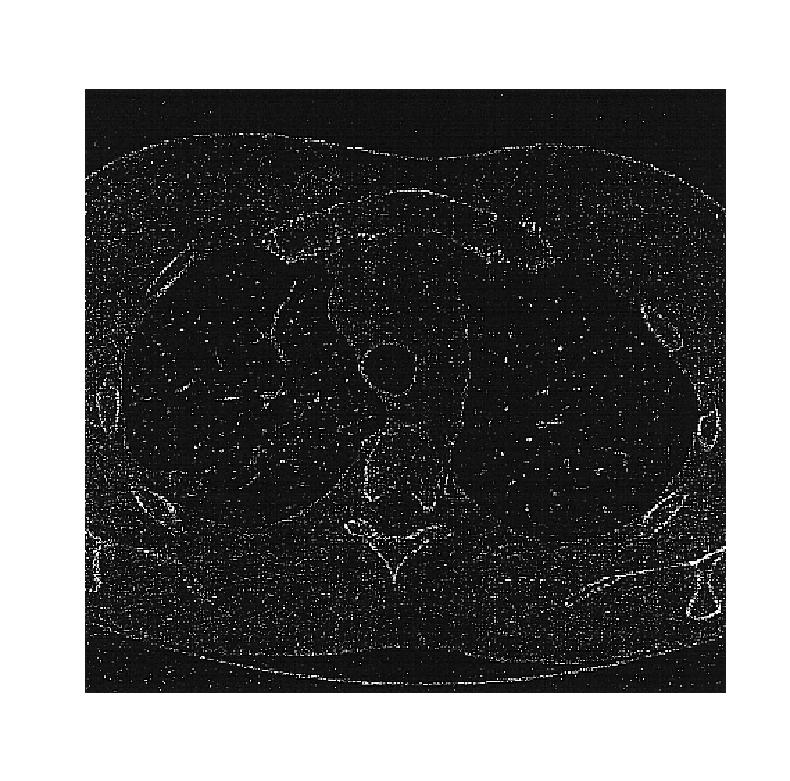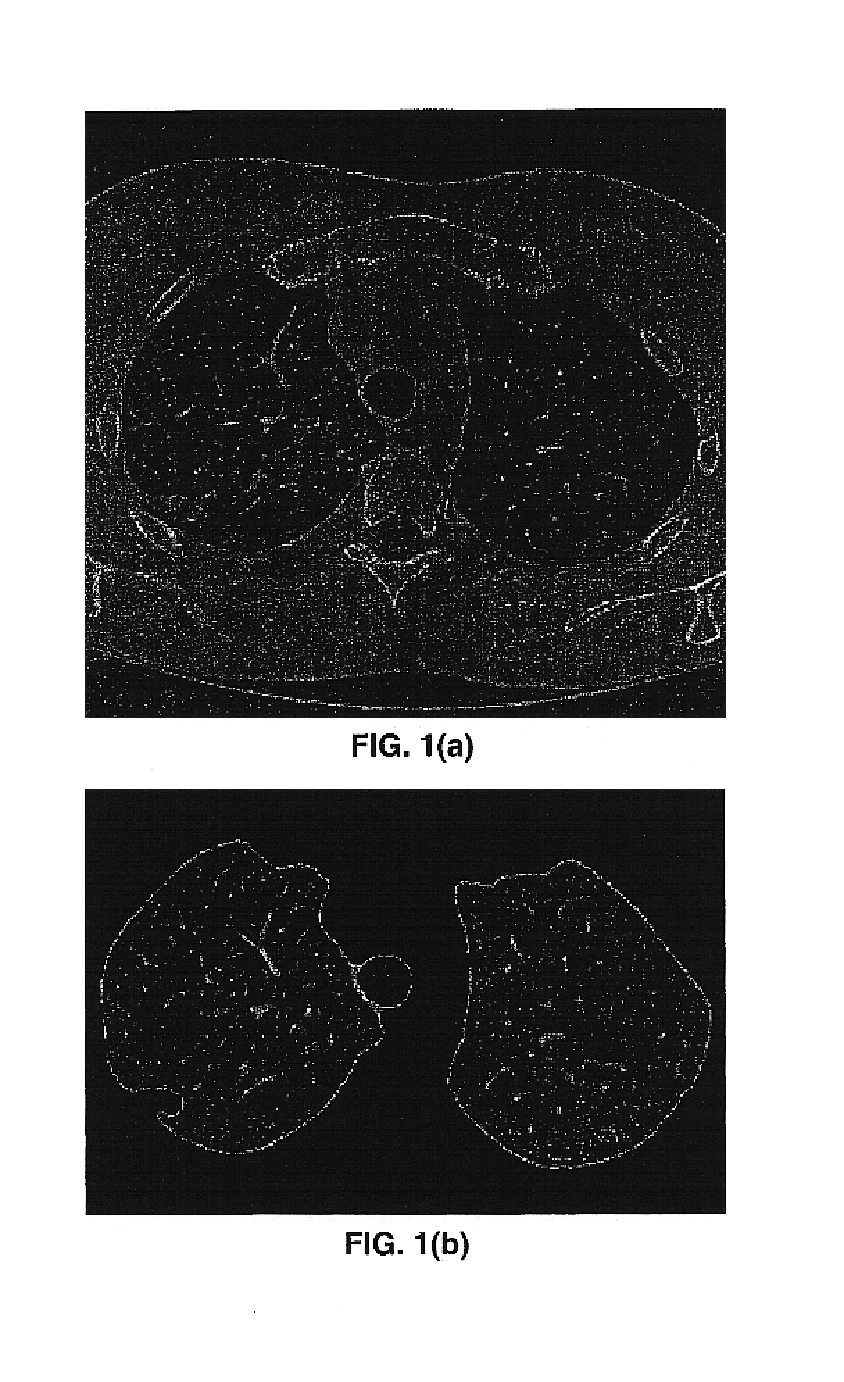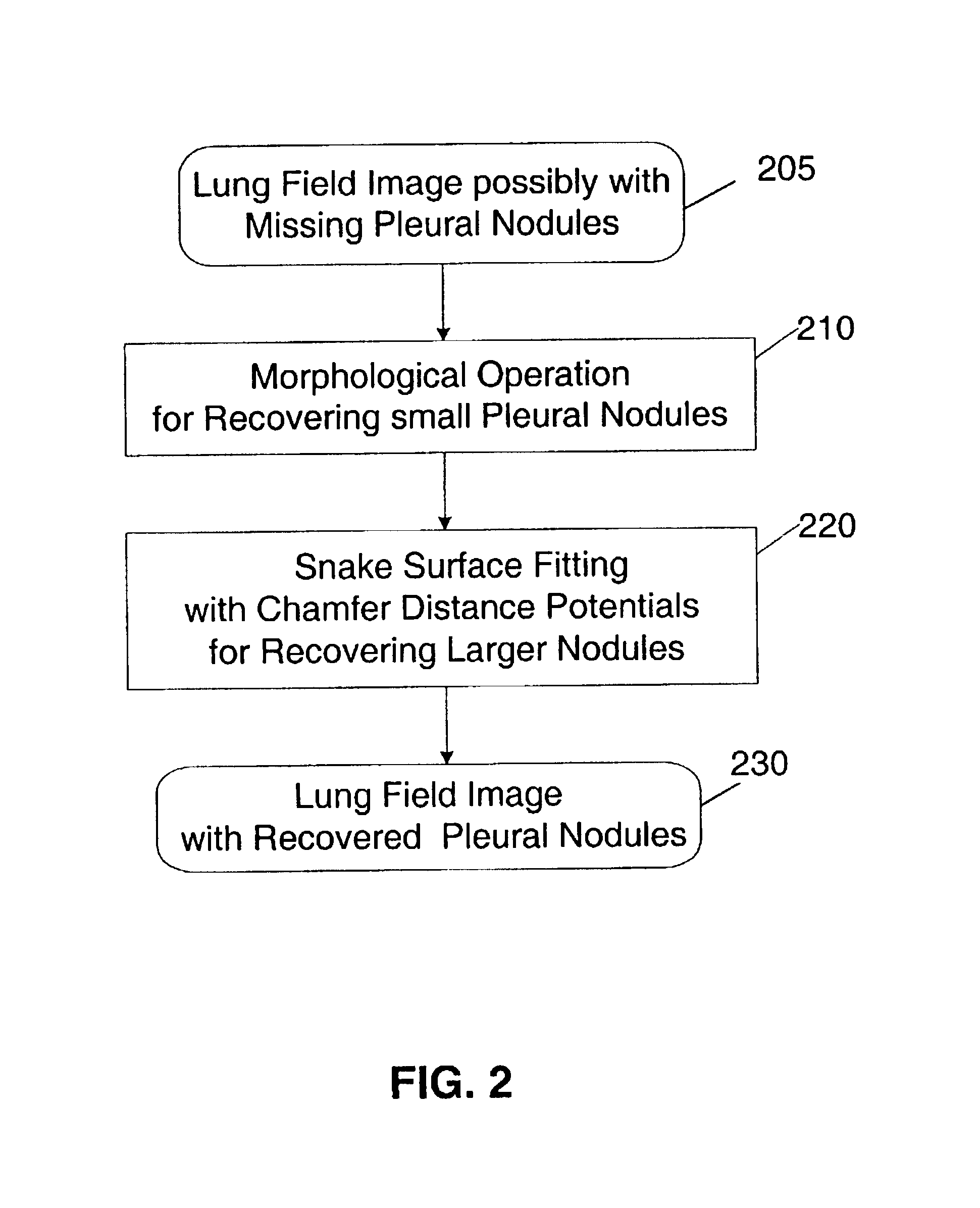Detection and analysis of lesions in contact with a structural boundary
a structural boundary and lesions technology, applied in the field of lesions detection and analysis in digital images, can solve the problems of inflexible methods in dealing with the size variability of nodules, difficulty in optimizing the size of the disk filter and controlling the spacing, and processing speed and accuracy
- Summary
- Abstract
- Description
- Claims
- Application Information
AI Technical Summary
Benefits of technology
Problems solved by technology
Method used
Image
Examples
Embodiment Construction
[0041]The present invention is preferably performed on a computer system, such as a Pentium™-class personal computer, running computer software that implements the algorithm of the present invention. The computer includes a processor, a memory and various input / output means. A series of CT axial or other digital images representative of a portion of the body are input to the computer. Illustratively, the portion of the body that is of interest is the thoracic volume; and examples of digital images or sections of the thoracic volume are shown in FIGS. 1(a) and 1(b). The terms “digital” and “digitized” as used herein will refer to images or volumes, as appropriate, in a digital or digitized format acquired via a digital acquisition system or via conversion from an analog image.
[0042]The present invention provides for systems and methods capable of effective and accurate lesion detection from 2-D and 3-D digital images. The digital image sections to be processed, rendered, displayed or...
PUM
 Login to View More
Login to View More Abstract
Description
Claims
Application Information
 Login to View More
Login to View More - R&D
- Intellectual Property
- Life Sciences
- Materials
- Tech Scout
- Unparalleled Data Quality
- Higher Quality Content
- 60% Fewer Hallucinations
Browse by: Latest US Patents, China's latest patents, Technical Efficacy Thesaurus, Application Domain, Technology Topic, Popular Technical Reports.
© 2025 PatSnap. All rights reserved.Legal|Privacy policy|Modern Slavery Act Transparency Statement|Sitemap|About US| Contact US: help@patsnap.com



